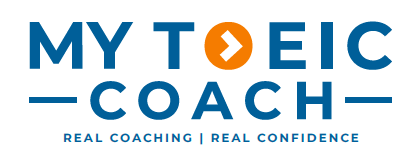🟧 Mastering TOEIC Yes/No Questions
Say Yes Without Saying Yes
Yes/No questions in Part 2 are one of TOEIC’s sneakiest traps.
They look easy. They sound familiar. And 80% of the time, the correct answer is not “Yes” or “No.”
If you want to score here, you have to stop thinking like a conversational English speaker — and start thinking like the test.
🎯 What TOEIC Is Really Testing
Part 2 isn’t checking if you’re polite or fluent. It’s checking if you can:
Recognise patterns
React quickly under pressure
Ignore the obvious
Choose logic over instinct
📊 The 80/20 Reality
In Yes/No questions:
One answer often says “Yes”
One says “No”
One sounds unusual, short, or incomplete
The strange one is correct about 80% of the time.
🧠 Example
Q: “Did you send the report?”
❌ “Yes, I will.” — Vague repetition.
❌ “No, not yet.” — Polite but unhelpful.
✅ “It was emailed this morning.” — Adds detail, moves the conversation forward.
💡 Play the Percentages
If you’re unsure:
Eliminate anything clearly irrelevant.
Compare the Yes/No answer with the “odd but informative” one.
Remember: Yes/No is right only ~20% of the time.
That’s a 4-to-1 advantage for picking the detailed, indirect answer.
🗣 How TOEIC Says “Yes” Without Saying It
“I submitted it this morning.”
“It’s already been processed.”
“The manager approved it yesterday.”
“They arrived 10 minutes ago.”
“She’s working on that now.”
“It’s scheduled for 3 PM.”
🗣 How TOEIC Says “No” Without Saying It
“Not yet, I’m still reviewing it.”
“She hasn’t arrived.”
“That’s been delayed until Friday.”
“I wasn’t informed about that.”
“Nothing has been confirmed.”
🚫 Common Traps
Q: “Do you know where the meeting is?”
❌ “Yes, I did.” — Too vague.
❌ “No, I forgot.” — Feels natural, but incomplete.
✅ “It’s in Room 402.” — Clear and useful.
Q: “Are they arriving today?”
❌ “No, I don’t think so.” — Weak.
❌ “Yes, that’s right.” — Adds no new info.
✅ “They’ll be here at 3 PM.” — Informative, no Yes/No.
🧭 Quick Strategy Checklist
When you hear a Yes/No question:
Eliminate irrelevant answers.
Compare the Yes/No with the indirect answer.
Choose the one that adds detail and moves the conversation forward.
Remember: You’re here for points, not small talk.
Final Word
In TOEIC Listening, Yes/No is often fool’s gold. The “weird” answer — the one that doesn’t repeat the question but gives useful detail — is usually your best bet.
For more strategies and resources to sharpen your TOEIC Part 2 decision-making, visit the English Library Collection and start mastering Yes/No questions with confidence.

